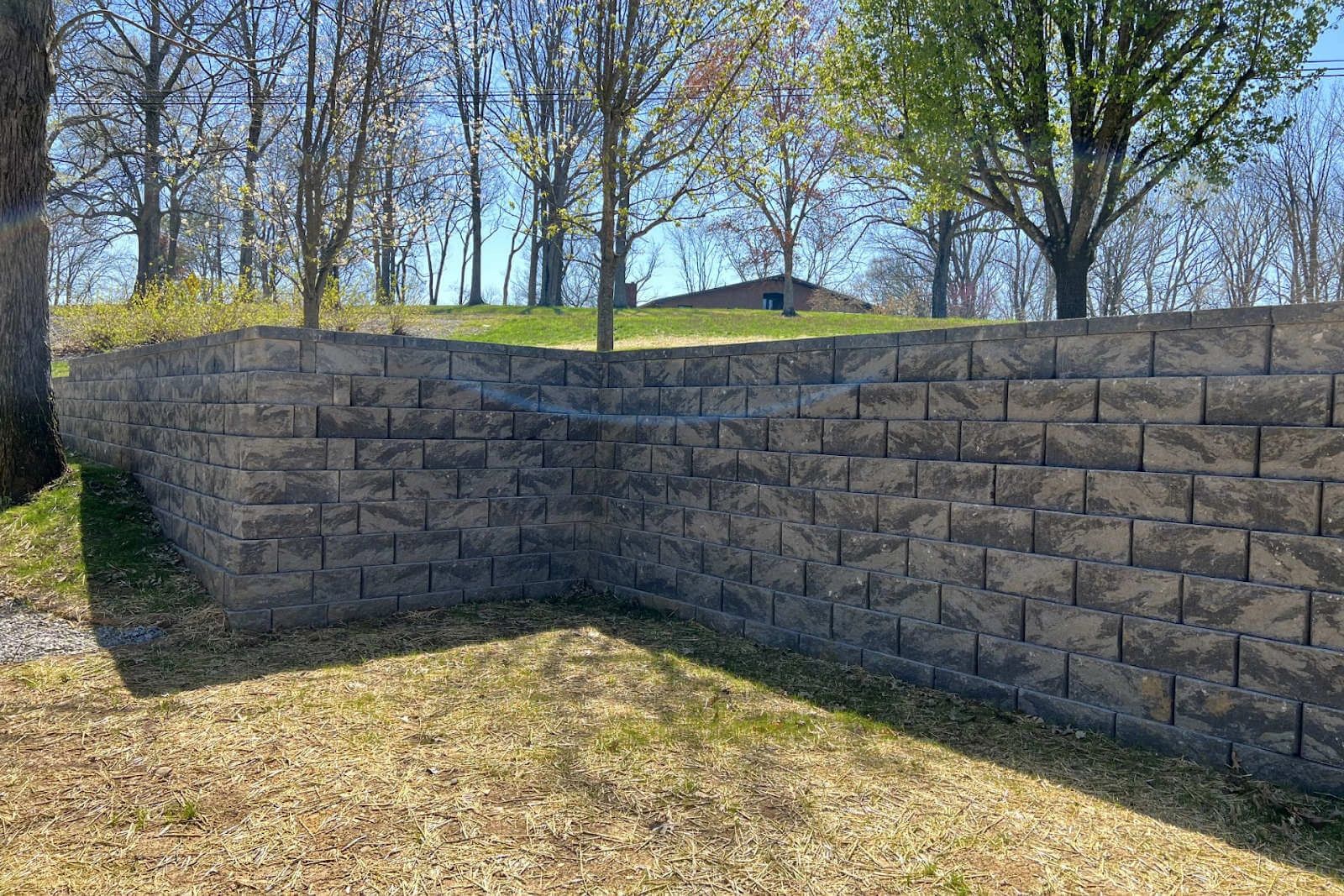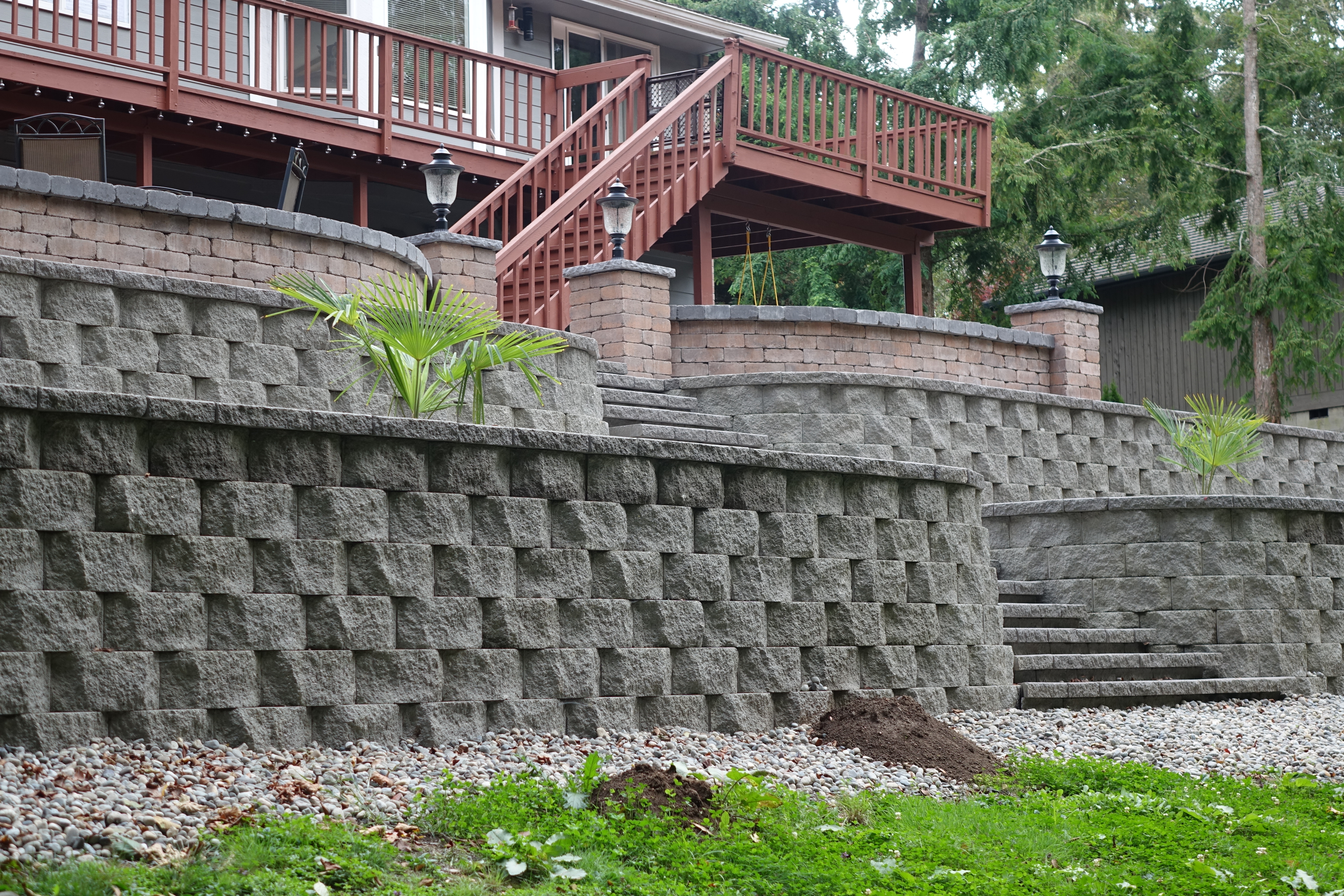Secret Considerations for Structure Efficient Retaining Walls in Your Backyard
When you're taking into consideration developing a retaining wall surface in your yard, it's essential to assume about a number of essential variables. The wall's function, the products you'll use, and the certain soil conditions can all influence its effectiveness and durability.
Recognizing the Purpose of Your Retaining Wall
When you assume regarding constructing a retaining wall, consider its major objective: stabilizing soil and protecting against erosion. Retaining walls supply essential support for sloped landscapes, assisting to keep soil honesty. You'll find they're important in locations where water drainage could otherwise wash away soil, bring about costly repair work and landscape damages.
By keeping back planet, these walls create level surfaces for gardens, patio areas, or paths. This not just boosts your backyard's looks yet also advertises much better drain, lowering water pooling in unwanted areas. If you're dealing with high inclines, a sound retaining wall can avoid landslides, making certain safety and security for you and your home.
Ultimately, recognizing the purpose of your retaining wall surface will direct your design decisions and aid you produce a functional, resilient structure that satisfies your requirements. Take a minute to review your landscape; it'll pay off in the long run.
Selecting the Right Materials
When choosing products for your retaining wall surface, you'll intend to consider toughness, aesthetic appeals, and expense. Each element plays a vital role in guaranteeing your wall surface stands the test of time while looking great and fitting your budget. Allow's check out how to make the very best options for your project.
Material Toughness Elements
Choosing the ideal materials is essential for the durability and effectiveness of your retaining wall surface, given that their toughness directly influences the wall's capacity to endure ecological tensions. Start by considering your neighborhood climate; products like concrete and rock withstand dampness and temperature level variations well. If you live in a location prone to hefty rains, go with products with excellent drain buildings, like gravel or permeable blocks, to avoid water accumulation.
Some materials execute better in details soil kinds, so it's crucial to match them accordingly. Picking resilient products guarantees your retaining wall surface stands strong, safeguarding your lawn for years to come.
Aesthetic Design Choices
Sturdy products not just ensure your retaining wall surface's structural integrity but likewise play a vital role in its visual allure. When picking the right products, consider exactly how they complement your landscape. All-natural rock uses a timeless, rustic look, while concrete blocks can give a streamlined, modern finish. You may additionally take into consideration using lumber for a warm, natural feeling. Color and structure matter, as well; select shades that integrate with your home and yard. Do not neglect concerning the wall's form-- rounded walls can develop a softer appearance, while straight lines can really feel much more structured. By very carefully choosing materials that align with your aesthetic vision, you'll improve your outside room while ensuring your wall stands solid against the elements.
Cost-Effectiveness Analysis
Choosing the best materials for your retaining wall isn't almost appearances; it's also essential for your budget. When picking materials, take into consideration both upfront costs and lasting durability. Concrete blocks might be more expensive initially, but their longevity can conserve you cash on repair work. On the other hand, lumber can be extra budget friendly however may call for substitute earlier.
Don't fail to remember to element in upkeep expenses. Some materials, like all-natural stone, can add charm and need much less maintenance, while others might need regular therapies
Ultimately, consider the pros and disadvantages of each choice versus your budget and the wall surface's designated purpose. Investing intelligently in materials currently can protect against pricey problems in the future. Select materials that stabilize expense and efficiency properly.
Assessing Soil Problems and Drainage
As you begin your task, reviewing soil problems and drain is crucial for the success of your retaining wall surface. Sandy dirt drains well but does not have stability, while clay dirt can preserve moisture, leading to pressure on your wall surface.
Next, examine the incline of your lawn. If water naturally moves toward your wall surface, you'll need to carry out a water drainage option to avoid disintegration and stress accumulation. Take into consideration setting up perforated pipes or crushed rock backfill behind the wall to facilitate drain.
Finally, observe any neighboring trees or vegetation; their roots can affect soil security. By comprehending your soil problems and executing correct drainage, you'll create a strong foundation for your retaining wall that stands the test of time.
Adhering To Local Building Regulations
Prior to you begin constructing your retaining wall surface, you require to research local laws to guarantee compliance. It's essential to recognize what permits you must acquire, as this can conserve you from expensive penalties or having to redesign your job. Taking these actions seriously will aid you construct a safe and reliable framework.
Research Local Laws
Recognizing neighborhood guidelines is crucial when preparing your retaining wall task, specifically considering that building codes can differ significantly by area. Look for guidelines on wall surface elevation, materials, drainage systems, and architectural honesty. By doing your research study upfront, you can guarantee your retaining wall surface meets all essential codes and blends effortlessly right into your yard.
Get Necessary Permits
As soon as you've researched neighborhood policies, the next action is to get the necessary licenses for your retaining wall surface job. This procedure guarantees your wall abides with building regulations and safety and security requirements. Get to out to your regional structure authority to figure out what allows you require. They may need details strategies or design analyses, especially for bigger walls. Be prepared to send detailed illustrations, including dimensions and materials. Do not neglect to examine if your project impacts drainage or bordering properties, as these factors might need added authorizations. Protecting the appropriate approvals can conserve you from pricey penalties or needing to dismantle your wall surface later. Bear in mind, adhering to the policies currently will certainly bring about a smoother building experience.

Preparation the Style and Looks
As you begin preparing the design and looks of your retaining wall surface, think about exactly how it will certainly harmonize with the bordering landscape. Think concerning the products you'll utilize-- rock, brick, or concrete-- and just how they'll match your home's design and the all-natural components in your backyard. Choose colors and appearances that blend flawlessly with existing attributes like patio areas, pathways, or gardens.
Next, picture the wall surface's shape and elevation. Curved walls can soften a rigid landscape, while straight lines may share an extra contemporary look. Don't forget to include plants and greenery around the wall for an all-natural touch; this can boost its allure and integrate it right into the setting.
Lastly, bear in mind capability. Source Your style should not just be aesthetically pleasing yet additionally serve its function effectively. By thoughtfully planning these aspects, you'll develop a maintaining wall surface that boosts your yard's charm while fulfilling its architectural function.
Calculating Elevation and Thickness Demands
To build a durable retaining wall surface, you require to precisely determine its height and thickness needs based on the dirt conditions and the elevation of the slope it will support. Beginning by assessing the slope's angle and the kind of dirt, as different soils exert varying quantities of pressure.
For walls over 4 feet high, think about a density of a minimum of 12 inches. If the wall is taller, boost the density proportionally to maintain stability.
Next, click now calculate the height of the wall by gauging the upright distance it requires to keep. For each foot of elevation, you should generally prepare for a density of one-third of the wall's elevation.
Always keep in mind to represent extra aspects like drain and backfill, which can influence your wall's style. Appropriate calculations currently guarantee your retaining wall surface stands strong and lasts for years to find.
Maintenance and Longevity Factors To Consider
While maintaining your retaining wall surface may appear like a low top priority, ignoring it can result in significant concerns over time. Routine assessments are vital; check for splits, protrudes, or any type of indicators of water damages. Addressing these problems early can conserve you from expensive repairs down the road.
Watch on drain systems, as well. Clogged drains pipes can cause water to accumulate, applying pressure on your wall and jeopardizing its security. Clear debris and guarantee correct circulation to maintain long life.
You may additionally wish to review sealing your wall to secure it from dampness and weathering. Depending on the material, this may call for reapplication every few years.
Finally, landscape design around your wall can sustain its visit this web-site integrity. Avoid growing large trees close by, as their origins can weaken the structure. With aggressive maintenance, your retaining wall surface can serve you well for years to find.

Frequently Asked Questions
Can I Build a Retaining Wall by Myself, or Should I Work with an Expert?
You can definitely develop a keeping wall surface on your own if you have the right tools and knowledge. Nevertheless, working with a specialist warranties it's done correctly, specifically for larger or even more complex structures. Consider your ability level before making a decision.
What Are one of the most Usual Mistakes Made When Building Retaining Walls?
When developing retaining walls, you might ignore appropriate water drainage, miss making use of the right products, or neglect reinforcement. These common blunders can cause architectural failing, so take your time and plan thoroughly to avoid issues.
Just how Do I Know if My Retaining Wall Needs Reinforcement?
You'll know your retaining wall needs reinforcement if you notice splits, leaning, or protruding. Look for water merging behind it or dirt disintegration near the base. Address these signs without delay to avoid additional damages.
What Plants Appropriate for Landscaping Around a Retaining Wall?
When landscaping around a retaining wall surface, take into consideration utilizing low-maintenance plants like succulents, decorative turfs, or sneaking ground covers - OKC Precision Retaining Walls. They'll grow in those problems and include elegance while avoiding soil disintegration around your wall
How Can I Prevent Disintegration Around My Retaining Wall?
To protect against disintegration around your retaining wall, you can grow ground cover, usage compost, and install drain systems. Consistently look for water accumulation and change landscape design to reroute runoff away from the wall surface.